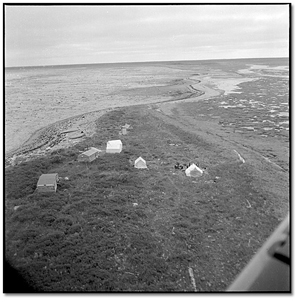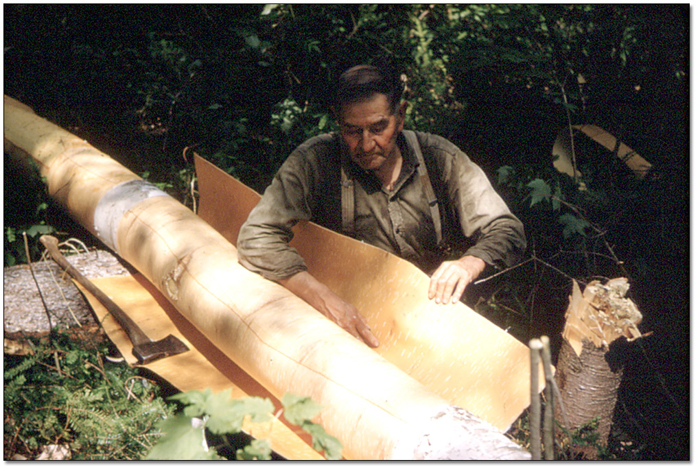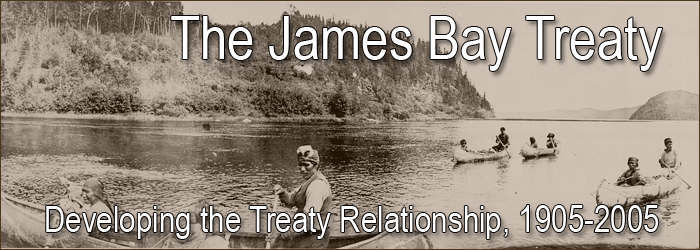
Table of Contents
Home | Peoples and Events Shaping Treaty No.9 | The Treaty No.9 Expedition of 1905-1906Developing the Treaty Relationship, 1905-2005 | The James Bay Treaty - Treaty No.9
Adhesions to Treaty No. 9 | 2013 Mushkegowuk Council Conference | About the Title Images
Ontario’s northern boundary was extended from the Albany River to its present location in 1912. As interest in resource development expanded north of this river in the 1920s, Treaty No.9 was extended by formal adhesions in 1929-1930. These Treaty adhesions were also held at Hudson’s Bay Company posts, but the Treaty Commission reached these locations by air travel.
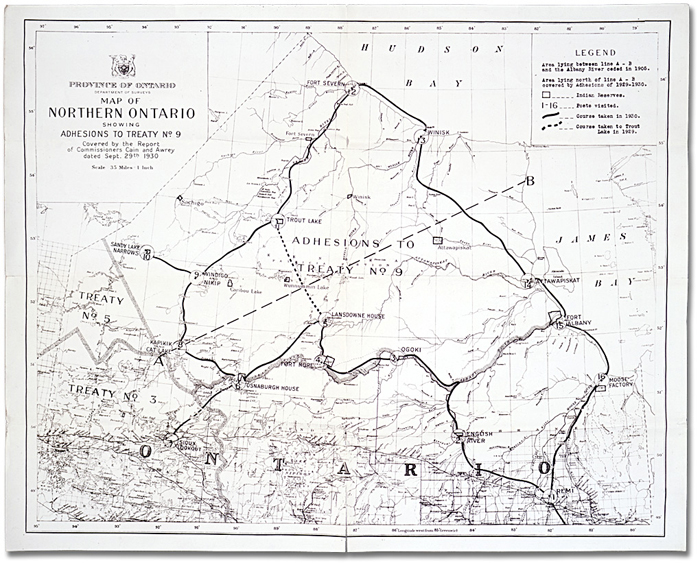
Click to see a larger image (338K)
Map of Northern Ontario showing adhesions to Treaty No. 9 covered by the Report of
Commissioners Cain and Awrey. Map 30. Ontario: Department of Surveys, 29 Sept. 1930
J. L. Morris fonds
Reference Code: F 1060 Folder 3, map 30, AO 6907
Archives of Ontario, I0021544
Following the Treaty, reserve lands for Aboriginal signatories were surveyed, and the population gradually moved into centralized communities (Reserves). Beginning in the 1940s, airstrips were built to serve the needs of remote First Nations communities. Many First Nations communities began receiving increasing government services at this time.
In several communities today, air travel continues to be the main vehicle for transporting
people and goods to and from larger, urbanized centres.
Click to see a larger image (99K)
Cree hunting/fishing camp on James Bay
near Fort Albany, August, 1963
James Bay Ontario, Northern
John Macfie
Black and white negative
Reference Code: C 330-8-0-0-14
Archives of Ontario, I0000193
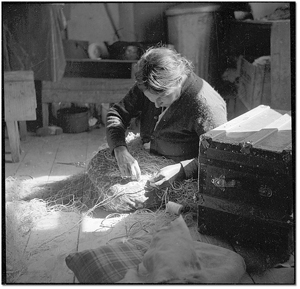
Woman at Fort Severn mending a gill net, 1955
John Macfie
Black and white negative
Reference Code: C 330-13-0-0-106
Archives of Ontario, I0000433
Centralized community life required First Nations people to make lifestyle adjustments. Some individuals gained employment in wage labour at local and regional levels, while others continued traditional, land-based activities. Hunting and fishing, from community homes and from campsites on the land remain highly valued today, both for cultural and economic reasons.
The image to the right shows a Cree woman repairing a gill net in her community residence in the 1950s.
Birch trees provided construction materials for many basic tools of traditional life, including canoes. The bark was also used to cover traditional lodges.
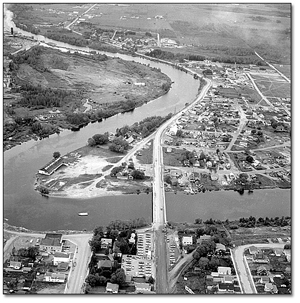
Click to see a larger image (140K)
Mattagami River West of Timmins,
Northern Ontario Aerial Hwy. 101
Reference Code: RG 14-151-1
Archives of Ontario, l0021536
Throughout the 20th century, several Euro-Canadian settlements established in the Treaty No.9 territory grew into urban communities.
First established as a mining settlement, Timmins had become a small city by the 1960s, as shown by this 1968 photograph.
In the early 1970s the First Nations began to organize themselves politically to represent their collective needs and concerns to the Federal and Ontario governments. In 1973, the more than 45 First Nations communities of Treaty No.9 created an umbrella organization called the Grand Council Treaty No.9 to this end. Now known as the Nishnawbe-Aski Nation, the organization seeks to build on the relationship with the Crown created by Treaty No.9.
Treaty Day, commemorating the signing of Treaty No.9 by ancestors of First Nations communities, is a symbolically important yearly confirmation of the ongoing treaty relationship.
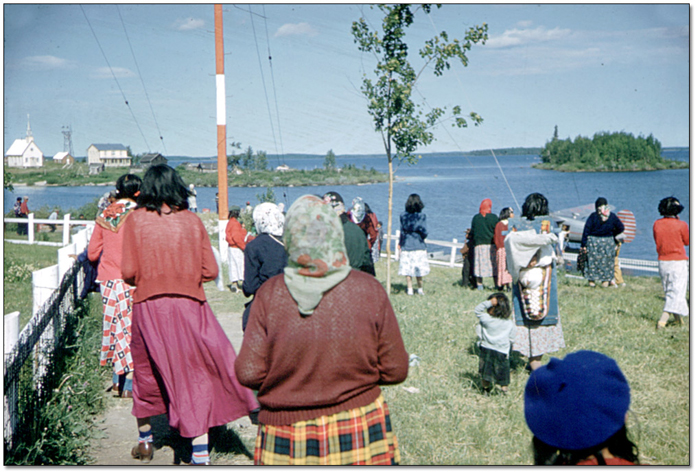
Members of the Fort Hope Band watching a floatplane arrive
at the dock at Lansdowne House at Treaty Time, June, 1956
John Macfie
Transparency
Reference Code: C 330-14-0-0-95
Archives of Ontario, I0012712
Peoples and Events Shaping Treaty No.9 | The Treaty No.9 Expedition of 1905-1906
Developing the Treaty Relationship, 1905-2005 | The James Bay Treaty - Treaty No.9
Adhesions to Treaty No. 9 | 2013 Mushkegowuk Council Conference | About the Title Images
